2019 Publications
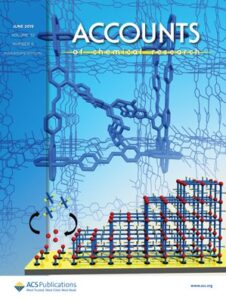
Adsorption-Based Atmospheric Water Harvesting: Impact of Material and Component Properties on System-Level Performance
A D. LaPotin, H. Kim, S R. Rao, and E. N. Wang
Atmospheric water harvesting (AWH) is the capture and collection of water that is present in the air either as vapor or small water droplets. AWH has been recognized as a method for decentralized water production, especially in areas where liquid water is physically scarce, or the infrastructure required to bring water from other locations is unreliable or infeasible. The main methods of AWH are fog harvesting, dewing, and utilizing sorbent materials to collect vapor from the air. In this paper, we first distinguish between the geographic/climatic operating regimes of fog harvesting, dewing, and sorbent-based approaches based on temperature and relative humidity (RH). Because utilizing sorbents has the potential to be more widely applicable to areas which are also facing water scarcity, we focus our discussion on this approach. We discuss sorbent materials which have been developed for AWH and the …
2018 Publications
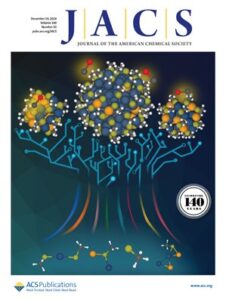
Tunable Metal–Organic Frameworks Enable High-Efficiency Cascaded Adsorption Heat Pumps
A J. Rieth, A M. Wright, S R. Rao, H. Kim, A D. LaPotin, E. N. Wang, and M. Dinca

Characterization of thin film evaporation in micropillar wicks using micro-Raman spectroscopy
L. Zhang, Y. Zhu, Z. Lu, L. Zhao, K. R. Bagnall, S R. Rao, and E. N. Wang

Adsorption-based atmospheric water harvesting device for arid climates
H. Kim, S R. Rao, E. A. Kapustin, L. Zhao, S. Yang, O. M. Yaghi, and E. N. Wang
Water scarcity is a particularly severe challenge in arid and desert climates. While a substantial amount of water is present in the form of vapour in the atmosphere, harvesting this water by state-of-the-art dewing technology can be extremely energy intensive and impractical, particularly when the relative humidity (RH) is low (ie, below~ 40% RH). In contrast, atmospheric water generators that utilise sorbents enable capture of vapour at low RH conditions and can be driven by the abundant source of solar-thermal energy with higher efficiency. Here, we demonstrate an air-cooled sorbent-based atmospheric water harvesting device using the metal− organic framework (MOF)-801 [Zr 6 O 4 (OH) 4 (fumarate) 6] operating in an exceptionally arid climate (10–40% RH) and sub-zero dew points (Tempe, Arizona, USA) with a thermal efficiency (solar input to water conversion) of~ 14%. We predict that this device delivered …

Spatial temperature resolution in single-phase micro slot jet impingement cooling
A K, Vutha, T. Rozenfeld, J H. Shin, S R. Rao, Y. Wang, G. Ziskind, and Y. Peles
Local temperature measurements were made in a microchannel jet impingement cooling system with a single slot jet (Dh = 68 µm and standoff distance of 210 µm). A 40%/60% solution of propylene glycol in deionized water was used as the working fluid. Resistance temperature detectors (RTDs) were fabricated over a rectangular heater of size 1500 µm × 400 µm allowing local temperature measurements. Nominal heat fluxes ranged between 50 W/cm2 and 150 W/cm2, and jet Reynolds numbers were in the range of 122–435. A three-dimensional conduction/convection conjugated numerical model with laminar and turbulent variants was developed to predict the jet hydrodynamics and heat transfer process. Good agreement was achieved between the model and the experimental data in terms of flow coefficients and local wall temperatures. Furthermore, a generalized Nusselt number dependence on …
2017 Publications
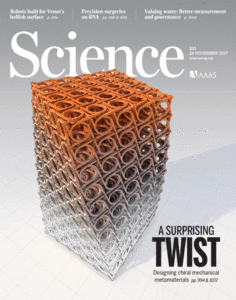
Response to Comment on “Water harvesting from air with metal-organic frameworks powered by natural sunlight”
H. Kim, S R. Rao, E. A. Kapustin, S. Narayanan, S. Yang, H. Furukawa, A. S. Umans, O. M. Yaghi, and E. N. Wang
In their comment, Bui et al. argue that the approach we described in our report is vastly inferior in efficiency to alternative off-the-shelf technologies. Their conclusion is invalid, as they compare efficiencies in completely different operating conditions. Here, using heat transfer and thermodynamics principles, we show how Bui et al.’s conclusions about the efficiencies of off-the-shelf technologies are fundamentally flawed and inaccurate for the operating conditions described in our study.

Water harvesting from air with metal-organic frameworks powered by natural sunlight
H. Kim, S. Yang, S R. Rao, S. Narayanan, E. A. Kapustin, H. Furukawa, A. S. Umans, O. M. Yaghi, and E. N. Wang
Atmospheric water is a resource equivalent to ~10% of all fresh water in lakes on Earth. However, an efficient process for capturing and delivering water from air, especially at low humidity levels (down to 20%), has not been developed. We report the design and demonstration of a device based on a porous metal-organic framework {MOF-801, [Zr6O4(OH)4(fumarate)6]} that captures water from the atmosphere at ambient conditions by using low-grade heat from natural sunlight at a flux of less than 1 sun (1 kilowatt per square meter). This device is capable of harvesting 2.8 liters of water per kilogram of MOF daily at relative humidity levels as low as 20% and requires no additional input of energy.
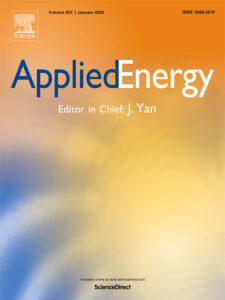
A thermophysical battery for storage-based climate control
S. Narayanan, H. Kim, A. Umans, S. Yang, X. Li, S. N. Schiffres, S R. Rao, I. S. McKay, C. A. Rios Perez, C. H. Hidrovo, and E. N. Wang
Climate control applications in the form of heating and cooling account for a significant portion of energy consumption in buildings and transportation. Consequently, improved efficiency of climate control systems can significantly reduce the energy consumption and greenhouse gas emissions. In particular, by leveraging intermittent or continuous sources of waste heat and solar energy, thermally-driven energy storage systems for climate control can play a crucial role. We demonstrate the concept of a thermophysical battery, which operates by storing thermal energy and subsequently releasing it to provide heating and cooling on demand. Taking advantage of the adsorption-desorption and evaporation-condensation mechanisms, the thermophysical battery can be a high-power density and rechargeable energy storage system. We investigated the thermophysical battery in detail to identify critical parameters …

Suppressing high-frequency temperature oscillations in microchannels with surface structures
Y. Zhu, D. S. Antao, D. W. Bian, S R. Rao, J. D. Sircar, T. Zhang, and E. N. Wang
Two-phase microchannel heat sinks are attractive for thermal management of high heat flux electronic devices, yet flow instability which can lead to thermal and mechanical fatigue remains a significant challenge. Much work has focused on long-timescale (∼seconds) flow oscillations which are usually related to the compressible volume in the loop. The rapid growth of vapor bubbles which can also cause flow reversal, however, occurs on a much shorter timescale (∼tens of milliseconds). While this high-frequency oscillation has often been visualized with high-speed imaging, its effect on the instantaneous temperature has not been fully investigated due to the typical low sampling rates of the sensors. Here, we investigate the temperature response as a result of the high-frequency flow oscillation in microchannels and the effect of surface microstructures on this temperature oscillation with a measurement data …
2016 Publications

Active control of flow boiling oscillation amplitude and frequency using a transverse jet in crossflow
A. K. Vutha, S R. Rao, F. Houshmand, and Y. Peles
We demonstrate a technique to mitigate thermal oscillations in microchannel flow boiling and suppress the characteristic frequency associated with these oscillations. The method employs a transverse jet in crossflow that is fabricated along with the primary microchannel in a double-sided vinyl tape, using laser machining. Liquid at ambient temperature is injected into a flow boiling region at different momentum flux ratios to control the local temperature. A maximum reduction of 82% in temperature fluctuations was demonstrated and the dominant frequency of oscillations was completely suppressed within a particular range of momentum flux ratios. The observed phenomena are attributed to the replenishment of liquid into dryout regions, thereby preventing the large temperature rise and subsequent drop caused by dryout and rewetting, respectively.
2015 Publications

Spatiotemporally resolved heat transfer measurements for flow boiling in microchannels
S R. Rao and Y. Peles
Spatiotemporally resolved wall heat transfer measurements can provide valuable insight into the fundamental mechanisms affecting flow boiling in microchannels. Operating at the microscale, necessitates resolving changes in local and instantaneous heat transfer characteristics on the order of 100 μm and 1 kHz, respectively. Straightforward interpretation of transient temperature measurements is often challenging due to the conjugate conduction effects in the substrate, which can dampen the measured and inferred heat transfer quantities. These damping effects are described using a slip coefficient (S), which represents the fraction of the change in the local heat transfer that is registered by a sensor (negligible thermal mass) located on a given substrate. Using S, arguments are presented that the conduction patterns in the substrate are predominantly 1-D (i.e. into the substrate) at suitable spatiotemporal-scales …
2014 Publications
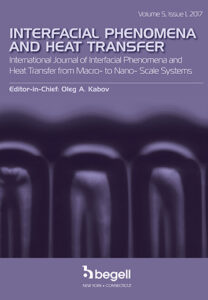
Development of an experimental method for flow-boiling heat transfer in microchannels
S R. Rao and Y. Peles
In this paper, we report on an experimental method, supported by a numerical conduction model, to determine the fundamental mechanisms controlling flow-boiling heat transfer processes, such as during bubble ebullition. This is achieved by synchronizing high-speed visualization with surface temperature measurement and using the numerical model to infer the heat transfer coefficient from the surface temperature measurements. A slip coefficient, S, is defined and provides a quantitative measure of the effect of conduction heat transfer in typical flow-boiling experiments in microchannels. To demonstrate the method, three high-speed experimental measurements are detailed. Surface temperatures at high frequencies (O (10 kHz)) are obtained with micron-sized thermistors; boiling events are simultaneously visualized and used in conjunction with transient temperature measurements and the S coefficient to infer …

Transient flow boiling heat-transfer measurements in microdomains
S R. Rao, F. Houshmand, and Y. Peles
A single channel microdevice (Dh = 230 μm) was used in this study to measure the local wall temperature in a flow boiling configuration using thin-film (70 nm titanium) thermistors. The device and experimental configuration allows the measurement of surface temperature with high spatial resolution and a temporal resolution in the kHz range with synchronized flow regime observation. A steady heat-flux was supplied to the working fluid (de-ionized water) using a thin-film heater (100 nm titanium) to study the transient temperature evolution accompanying several flow patterns, such as bubbly flow, elongated bubble (slug) flow, partial wall dryout, and critical heat flux (CHF). Transient local convective heat transfer coefficients are computed for phenomena such as bubble nucleation and bubble growth through the use of a 3-D finite element model to account for the transient conjugate heat transfer effects in the substrate.
2013 Publications
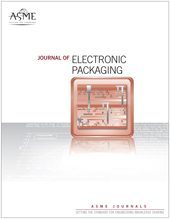
A Stepped-Bar Apparatus for Thermal Resistance Measurements
D R. Thompson, S R. Rao, B A. Cola
A stepped-bar apparatus has been designed and constructed to characterize the thermal resistance of materials using steady-state heat transfer techniques. The design of the apparatus is a modification of the ASTM D5470 standard where reference bars of equal cross-sectional area are used to extrapolate surface temperatures and heat flux across a sample of unknown thermal resistance. The design modification involves intentionally oversizing the upper reference bar (URB) of the apparatus to avoid contact area uncertainty due to reference bar misalignment, which is difficult to account for, as well as the high cost that can be associated with equipping the apparatus with precise alignment controls (eg, pneumatic alignment). Multidimensional heat transfer in the upper reference bar near the sample interface is anticipated using numerical modeling. The resulting nonlinear temperature profile in the upper reference …
